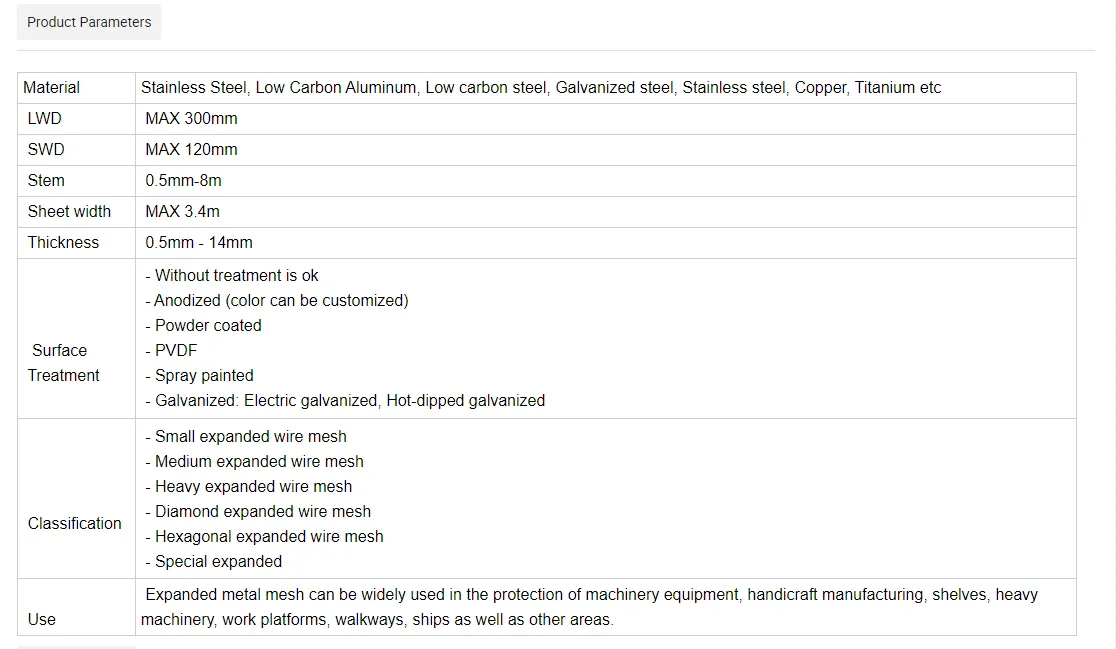Perforated Aluminum Panels A Contemporary Approach to Facade Design
In the realm of modern architecture, the facade of a building plays a pivotal role in defining its character and functionality. One innovative material that has gained prominence in recent years is the perforated aluminum panel. These panels are not only aesthetically pleasing but also serve various practical purposes, making them an ideal choice for contemporary buildings.
What Are Perforated Aluminum Panels?
Perforated aluminum panels are sheets of aluminum that have been drilled or stamped with a series of holes arranged in specific patterns. This process allows for customization, enabling designers to create unique designs that suit a building's aesthetic vision. The versatility of aluminum, combined with the potential of perforation, results in lightweight panels that can be tailored to accommodate various design specifications.
Aesthetic Appeal and Versatility
One of the primary advantages of perforated aluminum panels is their ability to enhance the visual appeal of a building’s facade. Architects and designers can incorporate patterns that reflect cultural significance, environmental themes, or brand identity. The perforation pattern can manipulate light, creating striking visual effects as sunlight filters through the holes, the interplay of light and shadow enlivening the building's appearance throughout the day.
The ability to customize these panels also means they can be used in a wide range of architectural styles, from sleek and modern to textured and historic. The lightweight nature of aluminum makes it an excellent material for applications where weight is a concern, such as high-rise buildings or structures with less robust support systems.
Functional Benefits
Beyond aesthetic enhancements, perforated aluminum panels offer various functional benefits. One significant advantage is thermal regulation. The perforations allow for adequate airflow, reducing heat buildup and providing natural ventilation. This can lead to improved energy efficiency, which is a crucial consideration in modern, sustainable architecture.
perforated aluminium panels facade

In addition to ventilation, these panels can also serve as sunshades, helping to control the amount of sunlight that enters a building. By reducing glare and heat gain, they contribute to a more comfortable indoor environment and lower air conditioning costs. The perforated design can be tailored to provide maximum shading during peak sunlight hours while allowing natural light to filter through.
Sound Absorption and Privacy
Acoustic comfort is another essential aspect of contemporary building design. Perforated aluminum panels can enhance sound absorption, making them a favorable choice for urban environments where noise pollution is a concern. By strategically placing these panels, architects can mitigate sound transmission, creating quieter living and working spaces.
Privacy is an aspect that is often overlooked in facade design. Perforated panels can create a degree of seclusion while still allowing light and visibility. This is particularly valuable for residential buildings or office spaces that require a certain level of privacy without sacrificing natural light.
Sustainability and Maintenance
As the architectural community moves toward more sustainable practices, perforated aluminum panels offer several environmentally friendly benefits. Aluminum is highly recyclable, making it a sustainable choice for building materials. The efficiency in energy use provided by perforation and ventilation also aligns with green building standards, contributing to LEED certification and other sustainability metrics.
In terms of maintenance, aluminum's resistance to corrosion and weathering ensures that buildings clad in perforated aluminum panels require less upkeep over their lifespan. This durability further solidifies the case for using perforated panels in diverse climates.
Conclusion
Perforated aluminum panels represent a fusion of art, functionality, and innovation in contemporary facade design. Their aesthetic versatility, functional benefits, and sustainability make them a compelling choice for architects and builders alike. As the architectural landscape continues to evolve, the role of these panels in creating visually stunning and environmentally responsible buildings is poised to grow, setting new standards in the design of modern facades.
-
Why Galvanized Trench Cover Steel Grating Resists Corrosion
NewsJul.10,2025
-
The Versatility and Strength of Stainless Expanded Metal Mesh
NewsJul.10,2025
-
Load Calculations in Steel Grating Platforms
NewsJul.10,2025
-
Keeping Pets and Kids Safe with Chicken Wire Deck Railing
NewsJul.10,2025
-
Hole Diameter and Pitch for Round Perforated Metal Sheets
NewsJul.10,2025
-
Aluminium Diamond Mesh in Modern Architecture
NewsJul.10,2025
Subscribe now!
Stay up to date with the latest on Fry Steeland industry news.

